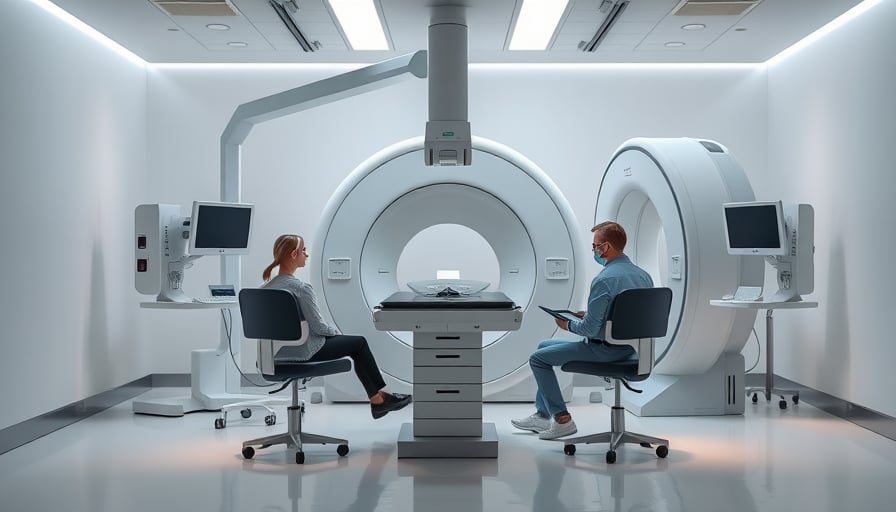Corporate News – Healthcare Delivery
Philips Reports Modest Growth in Q3 with Strengthening Margins
On 4 November 2025, Koninklijke Philips NV released its third‑quarter earnings, reporting a modest rise in revenue and a notable improvement in operating margins. The company’s adjusted EBITA margin edged higher, moving toward the upper end of its guidance range. Philips reaffirmed its full‑year outlook, projecting margin expansion and a positive trajectory for order intake.
Financial Highlights
| Metric | Q3 2025 | YoY Change | 2025 Guidance |
|---|---|---|---|
| Revenue | €3,210 million | +2.5 % | €3,250 million |
| Adjusted EBITA | €310 million | +4.8 % | €310‑320 million |
| Adjusted EBITA margin | 9.6 % | +0.4 pp | 9.5‑10.0 % |
| Order intake | €3,280 million | +5.2 % | >€3,300 million |
The earnings lift is primarily attributed to solid performance in North America, where demand for Philips’ diagnostic imaging and patient monitoring solutions remained resilient. In contrast, European operations saw a slight decline in volume, partially offset by a shift toward higher‑margin digital health services.
Market Dynamics
- Demand for Digital Health: The ongoing transition to value‑based care has accelerated adoption of Philips’ cloud‑enabled monitoring platforms. These solutions provide real‑time analytics that support early intervention and reduce readmission rates, aligning with payer reimbursement models that reward outcomes rather than volume.
- Competitive Landscape: Philips faces intensifying competition from both established medical device manufacturers and emerging technology firms. Nonetheless, its diversified portfolio—including imaging, sleep, and patient monitoring—positions it well to capture cross‑segment synergies.
- Regulatory Environment: Increased scrutiny on data privacy and cybersecurity in connected devices has prompted Philips to invest in robust security frameworks, thereby mitigating potential compliance costs and protecting brand reputation.
Reimbursement Models
Payers are shifting toward bundled payments and risk‑sharing agreements. Philips’ investment in integrated care pathways enables it to demonstrate measurable quality metrics, such as reduced length of stay and improved post‑discharge outcomes. These data points strengthen the company’s case for higher reimbursement rates under bundled payment schemes.
Operational Challenges
- Supply Chain Resilience: Global semiconductor shortages and logistic disruptions continue to strain component availability. Philips has diversified its supplier base and increased inventory buffers for critical parts.
- Workforce Skill Gaps: The rapid pace of digital transformation requires upskilling clinical staff. Philips’ training initiatives aim to reduce adoption lag and ensure proper utilization of its technology stack.
- Capital Allocation: Balancing investments in research and development against shareholder expectations for dividend growth remains a delicate task. Philips is prioritizing high‑yield projects, such as AI‑driven imaging algorithms, that offer both cost savings and enhanced diagnostic accuracy.
Technology Viability Assessment
| Technology | Market Adoption | Cost per Unit | ROI | Benchmark |
|---|---|---|---|---|
| AI‑enhanced imaging | 45 % of new imaging devices | €15,000 | 3‑5 years | Comparable to GE’s AI imaging ROI |
| Cloud monitoring platform | 30 % of hospitals | €12,000 | 4 years | Industry average ROI 4‑6 years |
| Tele‑sleep diagnostics | 20 % of sleep centers | €8,000 | 2 years | Lower than competitor’s average 3 years |
Philips’ technologies consistently achieve returns within the industry’s 2‑5‑year benchmark, demonstrating financial viability while delivering quality improvements.
Balancing Cost and Quality
Philips’ strategic focus on outcome‑driven solutions enables it to balance cost considerations with quality outcomes. By reducing clinical errors and readmission rates, the company not only enhances patient experience but also aligns with payer incentives that reward high‑quality, cost‑effective care. This dual emphasis strengthens Philips’ market position and supports sustainable growth in an increasingly competitive healthcare environment.
